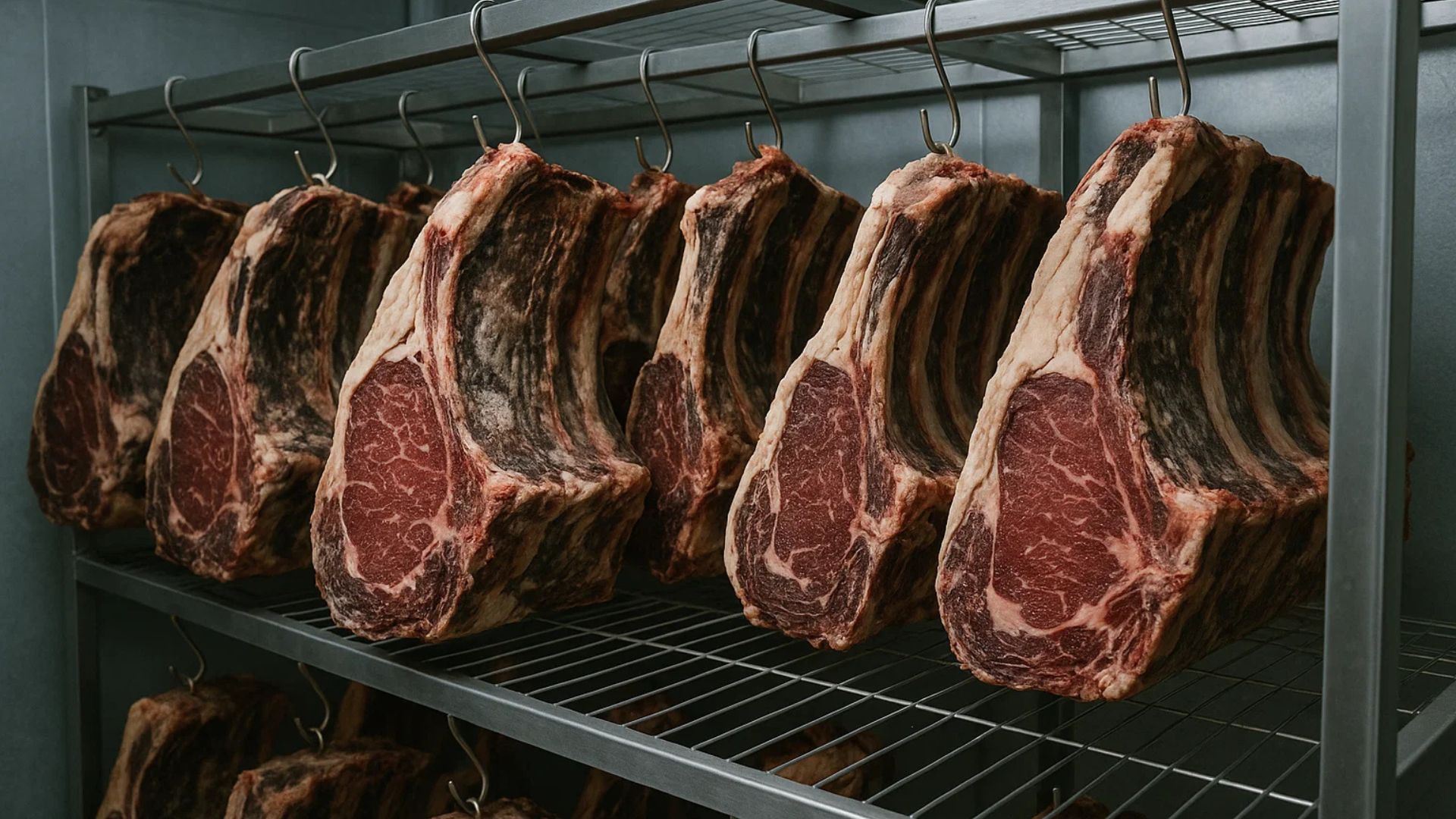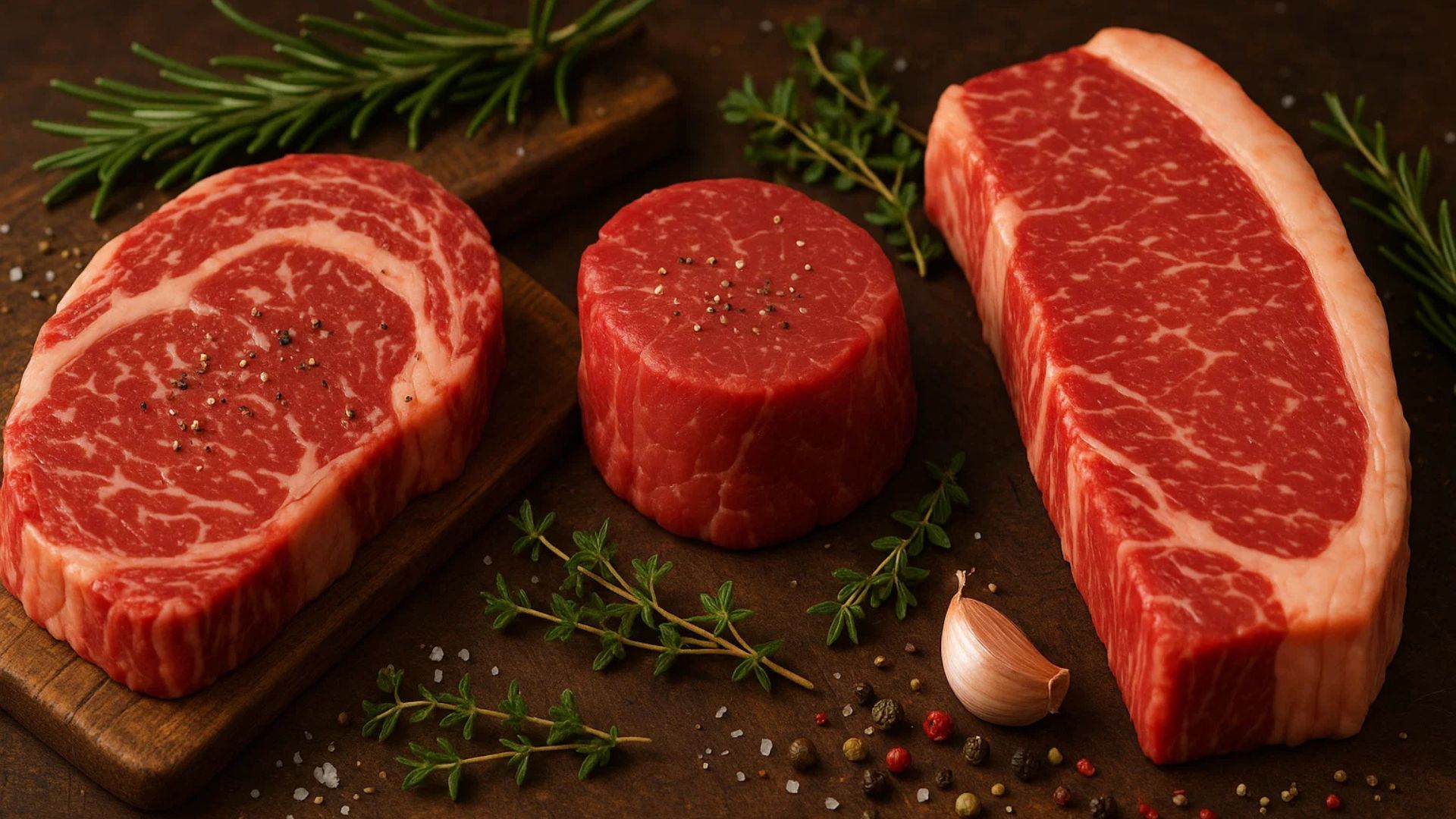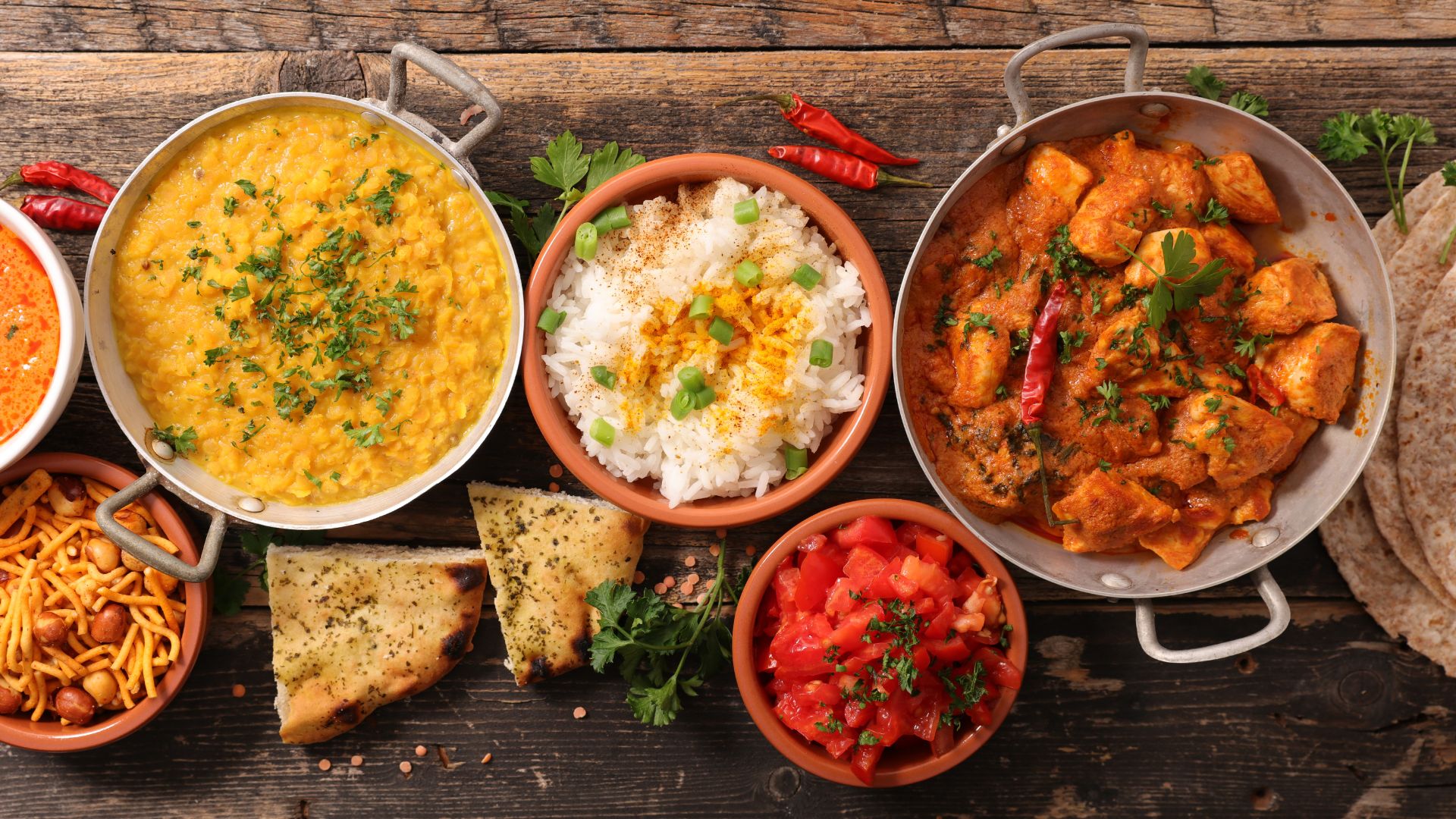There’s a kind of meat that doesn’t fight the knife. It doesn’t take long, doesn’t leave residue, and doesn’t require explanation. The texture holds through the first bite and softens without collapsing. The flavour arrives clean, builds without heaviness, and finishes without noise.
Many Dubai kitchens once treated premium meat as a matter of labels. They printed breeds and origins on menus, trusting names like Japanese Wagyu, USDA Prime, or grass-fed Angus to carry the weight. For a while, that worked. However, diners have changed, and so have the chefs.
Discerning diners – those who’ve eaten well across continents – now expect more than sourcing. They look for proper ageing, clean trimming, and careful handling of temperature and timing. A good cut is just the beginning. What happens on the butcher’s board and the grill matters more.
That’s why, in Dubai, premium meat is no longer defined by origin or label, but by everything that happens before it meets the pan.
At a Glance:
- Premium meat starts with muscle structure and marbling, not just the label.
- Only specific cuts, such as tenderloin, ribeye, and striploin, hold up well under heat and cut cleanly.
- Marbling must melt into the bite, not coat the tongue or drown the flavour.
- Dry-ageing is about control. It adds flavour and softens the structure without imparting a funky taste.
- Precision trimming removes silver skin, seams, and waste that ruin the cook.
- Meat must stay cold during transport, but be dry and at room temperature before cooking in the pan.
- Overcrowding, wet surfaces, or early seasoning ruin the sear.
- Even the best steak fails if it’s sliced hot or cut with the grain.
The Root of Real Meat Quality

Premium meat is defined by muscle structure, intramuscular fat, and the precision of its preparation, long before it sees the flame.
In professional kitchens like DOORS Dubai, quality is measured well before the grill is even lit.
- Cut From the Right Place: Only a few sections of the animal deliver the texture required at this level. Short loin, rib, tenderloin; areas where the muscle stays uniform, where fibres don’t resist, and where the cut holds its shape under heat.
- Fat, in Fine Balance: Marbling is more than appearance. It’s judged by how evenly it’s distributed, how cleanly it renders, and how well it integrates into the bite without coating the tongue. Too much, and the dish turns heavy. Too little, and the flavour falls flat.
- The Dry-Age Standard: Ageing isn’t done for show. It’s controlled, measured, and checked daily. The goal is to concentrate flavour without tipping into funk, allowing enzymes to soften the structure without collapsing it.
- Surgical Butchery: Precision butchery removes what doesn’t belong. No silver skin, oxidised fat, and loose seams. The trim defines how evenly the meat cooks and how cleanly it eats. It’s one of the first things chefs look for, and one of the easiest to get wrong.
- The Chain Must Hold: From slaughter to service, temperature must hold. A shift of just a few degrees becomes apparent later in the pan, as blood loss, discolouration, or an off-texture that no amount of skill can reverse.
- No Alteration. No Shortcuts: True premium meat doesn’t need to be injected, brined, or chemically tenderised. What it needs is time to rest, a consistent temperature, and hands that know when to leave it alone.
Each of these details sets the foundation. But if the cut doesn’t suit the method, the classification is misread, or the origin isn’t chosen for the right reason, the rest can only do so much.
What Defines Premium Meat? Cut, Classification, and Origin

Not all meat labelled ‘premium’ performs on the plate. If the cut isn’t right for the cooking method, the grain structure resists instead of yielding. When classification is misunderstood, marbling can overwhelm rather than elevate. If origin is chosen for name rather than purpose, the result can be bland, tough, or overly fatty.
Miss any one, and even the best equipment and technique won’t recover what was lost at the source.
- Cut
Not all parts of the animal carry the same value. The distinction lies in muscle use. Prime cuts, such as ribeye, tenderloin, and striploin, come from areas with minimal movement, offering a finer grain and less connective tissue. These are chosen not just for tenderness, but for how they respond to high-heat grilling, retaining moisture while developing a proper crust.
- Classification
Grading systems vary. USDA, Japanese A5, and Australian MSA each assess marbling, texture, and maturity differently. However, in every system, intramuscular fat (not surface fat) remains key. Premium classifications aren’t about richness. They’re about how evenly that fat melts into the muscle, delivering flavour without overwhelming the palate.
- Origin
Geography shapes flavour. Grass-fed cattle from Argentina bring a mineral-rich depth. Japanese Wagyu is renowned for its dense marbling and low melting point, resulting in a buttery texture. Australian beef offers consistent tenderness and balanced flavour, even at scale. It’s not about which country, it’s about understanding what each region brings to the plate, and choosing accordingly.
You’ll see this thinking reflected across the DOORS Dubai menu, where each cut is selected not just for its quality, but for what it expresses best from its place of origin.
Technique Makes the Final Difference

Even with the proper cut, grade, and origin, it’s what happens in the minutes before and after the pan that defines premium meat. Temperature control, surface dryness, sear timing, and rest intervals; each decision shapes the final bite.
This is repetition, recall, and an understanding of how meat behaves under pressure.
1. Cold Meat and a Wet Surface Will Always Fail the Sear
If the surface isn’t dry, colour won’t build. Cold cuts hold back when they hit the grill. The water rises before the fat has time to react, and the crust never quite forms. In kitchens like this, meat is handled by feel, warmed just enough, dry to the touch, ready for heat.
2. Stacking the Grill Kills the Heat Before It Can Work
When too much meat is placed on the grill at once, the surface temperature drops. Without enough heat, the meat starts to steam instead of searing. The result is pale edges, no crust, and an uneven bite. Chefs at this level don't rush. Each cut is spaced with intention, allowing it to colour properly, cook evenly, and finish clean.
3. Seasoning Too Soon Pulls More Than Just Moisture
Salt can sharpen flavour or strip it. On finely marbled cuts, seasoning too early draws moisture out and tightens the muscle. That decision (when to season, how much, and how long before the pan) comes from experience, not by default.
4. Uncontrolled Heat Leaves the Centre Behind
Searing is about how the heat moves through the meat. If the exterior runs ahead of the centre, the cut ends up scorched on the outside and flat on the inside. Controlled heat gives you contrast: a seared crust, an even centre, and a clean finish.
5. Cutting Too Soon Means Losing What Matters Most
If you slice the meat too early, the juices run out. The fibres need time to settle, or the beef looks full but tastes dry. Chefs wait because they know what’s lost if they don’t.
6. Slice It Wrong, and Even the Best Cook Falls Flat
Even a perfectly cooked steak can feel tough if it’s sliced the wrong way. The knife should go against the grain, not with it. This shortens the muscle fibres, making each bite tender. Get it wrong, and the texture turns chewy, no matter how well it was grilled.
The Steakhouse Defining Premium Meat in Dubai
At DOORS Dubai, premium meat is the foundation. Sourced from selected producers, each cut arrives whole and is broken down in-house to maintain complete control over weight, trim, and muscle integrity.
The result hits the table still hot, with the crust audibly crackling, just resting beneath the grain. Every texture lands where it should: soft, chewable centre; crisp, salted edge.
At DOORS, premium isn’t limited to the meat; it’s in the entire experience. From the moment you reserve a table, every detail is treated with the same care as the cut itself.
FAQs
1. What defines premium meat beyond origin or classification?
Premium meat is about more than its origin. It’s defined by muscle structure, fine marbling, proper ageing, and how the meat is handled before it reaches the heat. Technique and treatment matter just as much as sourcing.
2. Why does the cut matter so much?
Different cuts come from parts of the animal that have varying levels of muscle use. Prime cuts, such as ribeye or tenderloin, come from areas with less movement, making them more tender and ideal for high-heat cooking. The proper cut ensures both texture and flavour align with the method.
3. How does marbling affect the taste of meat?
Marbling is the fine intramuscular fat that melts during cooking, enriching the meat with flavour and juiciness. Well-distributed marbling gives a clean, rounded taste without leaving the meat greasy or heavy.
4. What’s the role of dry-ageing in premium meat?
Dry-ageing concentrates flavour, tenderises the muscle, and builds a natural outer crust. Over time, it enhances umami while allowing enzymes to break down connective tissue, improving both texture and depth.
5. Why is technique so crucial if the meat is already high quality?
Even the best cuts can be ruined by poor handling. Mistakes like over-salting, cooking straight from the fridge, or slicing the wrong way can undo the value of a premium ingredient. Technique is what brings the meat’s full potential to the plate.
6. What makes the experience at DOORS Dubai different?
At DOORS, attention extends beyond sourcing. Every cut is portioned and prepared in-house, served at its peak, and accompanied by an environment designed to complement the dish. Reserving a table ensures the experience begins with the same precision that defines the menu.






.png)
.svg)

